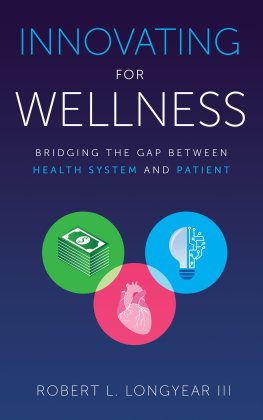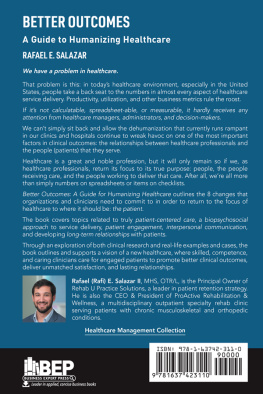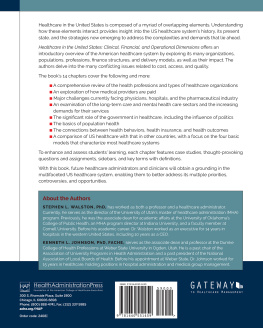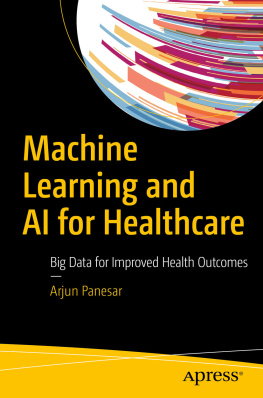HEALTHCARE IN MOTION
Edited by Noel B. Salazar, University of Leuven, in collaboration with ANTHROMOB, the EASA Anthropology and Mobility Network.
This transdisciplinary series features empirically grounded studies that disentangle how people, objects, and ideas move across the planet. With a special focus on advancing theory as well as methodology, the series considers movement as both an object and a method of study.
Volume 1
KEYWORDS OF MOBILITY
Critical Engagements
Edited by Noel B. Salazar and Kiran Jayaram
Volume 2
METHODOLOGIES OF MOBILITY
Ethnography and Experiment
Edited by Roger Norum, Alice Elliot, and Noel B. Salazar
Volume 3
INTIMATE MOBILITIES
Sexual Economies, Marriage and Migration in a Disparate World
Edited by Christian Groes and Nadine T. Fernandez
Volume 4
MOMENTOUS MOBILITIES
Anthropological Musings on the Meanings of Travel
Noel B. Salazar
Volume 5
HEALTHCARE IN MOTION
Immobilities in Health Service Delivery and Access
Edited by Cecilia Vindrola-Padros, Ginger A. Johnson, and Anne E. Pfister
Healthcare in Motion
Immobilities in Health Service Delivery and Access
Edited by
Cecilia Vindrola-Padros, Ginger A. Johnson, and Anne E. Pfister
First published in 2018 by
Berghahn Books
www.berghahnbooks.com
2018 Cecilia Vindrola-Padros, Ginger A. Johnson, and Anne E. Pfister
All rights reserved. Except for the quotation of short passages for the purposes of criticism and review, no part of this book may be reproduced in any form or by any means, electronic or mechanical, including photocopying, recording, or any information storage and retrieval system now known or to be invented, without written permission of the publisher.
Library of Congress Cataloging-in-Publication Data
Names: Vindrola-Padros, Cecilia, 1983 editor.
Title: Healthcare in motion : immobilities in health service delivery and access / edited by Cecilia Vindrola-Padros, Ginger A. Johnson, and Anne E. Pfister.
Description: New York : Berghahn Books, 2018. | Series: Worlds in motion ; volume 5 | Includes bibliographical references and index.
Identifiers: LCCN 2018006185 (print) | LCCN 2018018667 (ebook) | ISBN 9781785339547 (ebook) | ISBN 9781785339530 (hardback : alk. paper)
Subjects: LCSH: Health services accessibility. | Health planning. | Medical policySocial aspects. | MinoritiesMedical care.
Classification: LCC RA393 (ebook) | LCC RA393 .H3746 2018 (print) | DDC 362.1dc23
LC record available at https://lccn.loc.gov/2018006185
British Library Cataloguing in Publication Data
A catalogue record for this book is available from the British Library
ISBN 978-1-78533-953-0 hardback
ISBN 978-1-78533-954-7 ebook
Contents
Cecilia Vindrola-Padros, Ginger A. Johnson, and Anne E. Pfister |
Cecilia Vindrola-Padros |
Heide Castaeda |
Nolan Kline |
Urula Lipovec ebron and Sara Pistotnik |
Anne E. Pfister |
Anne E. Pfister and Cecilia Vindrola-Padros |
Amy Speier |
Evgeniya Plotnikova |
Ginger A. Johnson |
Alina Engelman |
Sunitha C. Srinivas and Sharli A. Paphitis |
E. Kale Edmiston |
Perrie Briskin and Sara Luca Gallo |
Cecilia Vindrola-Padros, Ginger A. Johnson, and Anne E. Pfister |
Figures and Tables
Introduction
Healthcare in Motion
Cecilia Vindrola-Padros, Ginger A. Johnson, and Anne E. Pfister
(Im)mobilities permeate every aspect of our daily life, including our opportunities, lifestyle choices, well-being, and access to healthcare. The scale of movement associated with obtaining health services is increasing, with an estimated five million people traveling to obtain medical care in another country (Horsfall and Lunt 2016). Healthcare professionals are also increasingly mobile, and it is estimated that low- and middle-income countries (LMICs) contribute between 40 and 75 percent of medical graduates to high-income countries (HICs), a phenomenon leading to brain drain in areas of the world with the highest levels of disease burden (Bradby 2014; Humphries et al. 2015; Mackey and Liang 2012; Mpofu, Sen Gupta, and Hays 2016). Healthcare practice is also becoming mobile with the incorporation of new technologies that adjust to patients mobility trends through the use of devices (e.g., mHealth, or mobile health), in some cases, allowing the delivery of services without being in the same location (e.g., virtual healthcare services) (Fiordelli, Diviani, and Schulz 2013). In 2013 alone, approximately one thousand mHealth projects were implemented across the globe, and 65 percent of those were taking place in developing countries (Al Dahdah, Du Lo, and Madel 2015; GSMA 2013).
The current state of movement of patients, healthcare professionals, and medical services opens opportunities to new forms of healthcare or higher quality of services for some populations, but limits access to care for others (Chen and Flood 2013; Whittaker, Manderson, and Cartwright 2010). As some populations become more mobile, others might face restrictions in movement as borders solidify, political tensions between citizens and migrants erupt, and policies dictating deservingness to public services are enforced (Messina 2011; Winton 2015). Technologies designed to empower healthcare users and disseminate health information to a wider range of stakeholders might remain available to the few groups able to access them (Al Dahdah et al. 2015). These differences in capacities for movement are the product of larger social, political, economic, and cultural factors that contribute to inequalities in the distribution of health services, and differences in the quality of available healthcare (Lee, Kearns, and Friesen 2010).
The turn toward a focus on mobilities in the social sciences has demonstrated the centrality of mobilities in our everyday lives (Salazar 2016) and draws our attention to the multiple ways in which being mobile (or immobile) is the product of individually negotiated social, cultural, economic, and political processes (Bscher and Urry 2009; Urry 2002; Urry 2007). As DAndrea, Ciolfi, and Gray (2011: 150) have argued, mobilities deserve to be examined in their own singularity, centrality and contingent determination, as they may destabilize and recode social and natural formations in ways that cannot be properly understood through the lenses of classical (sedentary) social theory. Movement and stasis can therefore be used as a window into social constructions of gender, class, ability, ethnicity, the cultural meaning of place, and identity formation, as well as experiences of delivering and obtaining health services and other forms of care.













